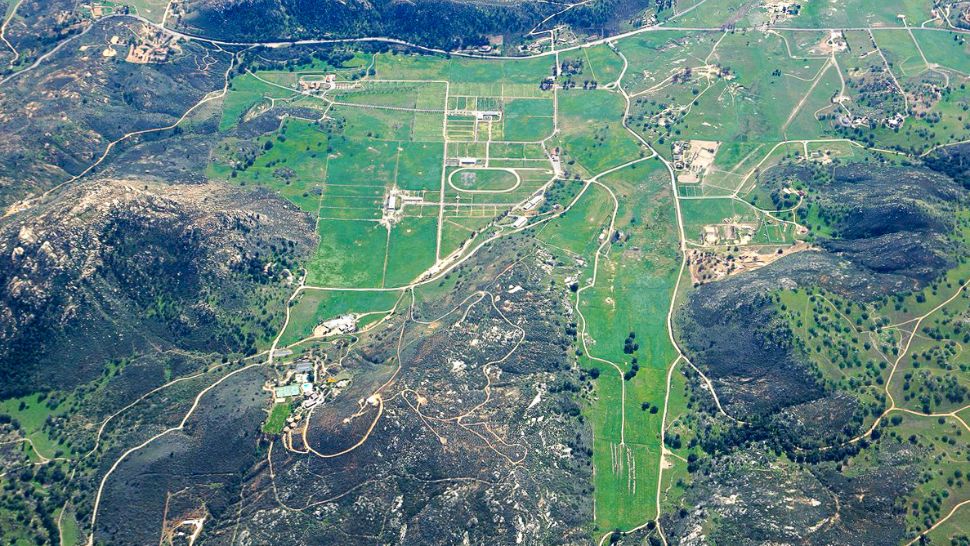
We had the pleasure of interviewing Essence Sage Oyos from the Mesa Grande Business Development Council (BDC) to talk more about the work the BDC is doing to achieve the goals of the Mesa Grande Band of Mission Indians.
Tell me about your tribe, which owns the land for Golden Eagle Farm?
There are 18 federally recognized tribes in San Diego County, but we would probably be divided more by language groups of which there are two main groups.
Our tribe, the Mesa Grande Band of Mission Indians is the ‘Iipay, which is the northern group. We are often considered part of a larger group that is now being called the Kumeyaay, but that’s really something anthropologists and other scientists have designated, not us.
The reservation land was established in 1891 by executive order, and we have roughly 1800 acres. A federal clerical error back in the 1890s has led to a dispute with the federal government over an additional roughly 6000 acres of land that was mistakenly patented to another tribe.
But we don’t own the land, we are part of the land, and the farming aspect of what it is that we’re creating now is just a continuance of what our ancestors did on the reservation as well.
Our reservation land has water access issues, so a lot of folks over the last century or so ended up having to leave the reservation to provide for their families. The 560 acres of land of Golden Eagle Farm is actually a part of our traditional territory in the sense that we were nomadic, migrating from the coast to the desert depending on the seasons and food sources. And the land also offers our reservation access to resources we didn’t historically have as well.
What inspired your tribe to use the land to develop an organic farm?
In 2019, two tribal members, a tribal council member, and I were awarded full scholarships to attend the Seeds of Native Health Conference at the Shakopee Mdewakanton Sioux Community in Minnesota.
In addition to visiting their gardens and attending outbreak sessions with chef Sean Sherman, the conference gave rise to the commitment that we must bring healthy food back to our community. It’s a food desert out there in the middle of back country San Diego County, and access to healthy foods is very minimal. It really inspired us to bring healthy food back to our community. And not only that, but to help our people reconnect with the land that was taken from us due to the reservation system.
There’s a big movement to indigenize food systems again and get back to the land, which is the impetus for doing everything we could to at least convert some of that property that’s on the Golden Eagle Farm to food production.
What does the BDC envision this farm to become?
In addition to agrotourism, we want to become a central hub in the community, not only for tribal farm workers but also a place where families can come to be together, learn where their food comes from, and tend to the land so that it can continue supporting all of us.
We’d love to become a locus for training and education about all things sustainable and all things farming. We’ve even daydreamed about eventually bringing beekeeping to the area!
What are these efforts to indigenize the food system rooted in?
Our tribe has been largely disconnected from farming practices due to the reservation system, but, like other tribes, we are wanting to return to the practices of our ancestors. We’re doing outreach to other Southern California tribal farmers to get back to the sustainable practices that our ancestors once did that were rooted in collaborations with other tribes.
A personal effort to return to these practices that I have pursued is learning our language, which is no longer spoken regularly by tribal members. One of the things that I love the most, that sticks with me from my language classes is that the word in our language for land or earth is the same word for body: m’aat.
So, when you nourish and tend to your body, you are nourishing and tending to the land. And when you are nourishing and tending to the land, you’re nourishing and tending to your body. So, it’s sort of like an infinity loop.
The infinity-loop relationship of land and body in your tribal culture is a powerful concept. Could you speak more about your efforts to give back to the earth?
We’ve been working with the Natural Resource Conservation Service to implement sustainable practices for soil health and water conservation.
Our team has really worked hard to implement irrigation measures so that there is no wasting of water, especially because the water table in that valley feeds all of the neighbors’ wells. So, we’re really, really, really focused on the conservation of the water in the area.
Soil conservation and health is also something we’re working on now. The farm crew has been learning from a specialist about how to do no-till crops so that there’s very little disturbance of the soil.
The fact that we’re teaming up with consultants that have the knowledge, experience, and desire to train our tribal people to do best practices with the land, water, and the rest of the environment is of the utmost importance.
We’re also working on collaborating with our neighbor tribal seed steward to bring back more tribal collaborations so that we can support each other in the best practices for the land and the water. It’s a work in progress, but we’re learning and growing daily.
Do you have any final thoughts you’d like to share?
The only other thing I really would have to say is, please come, please come visit the farm. Please come buy the produce.